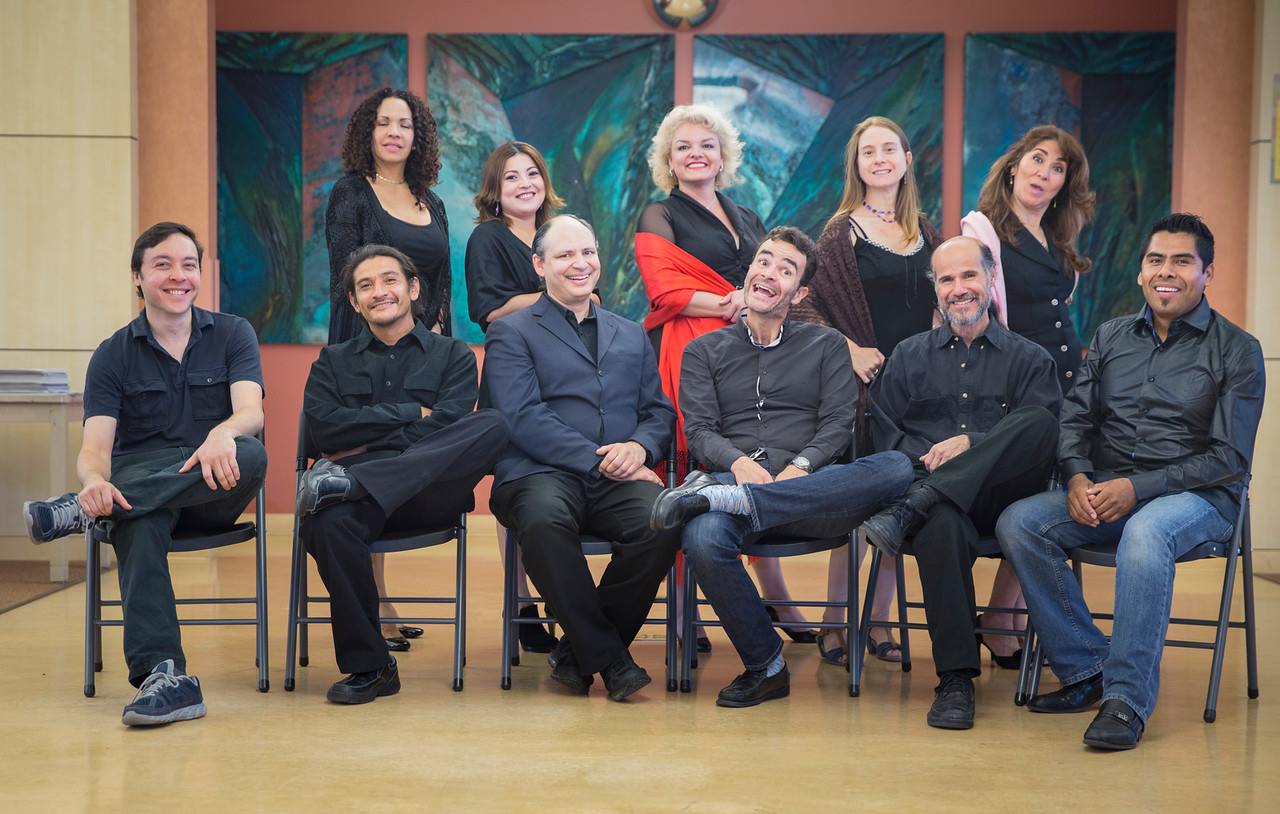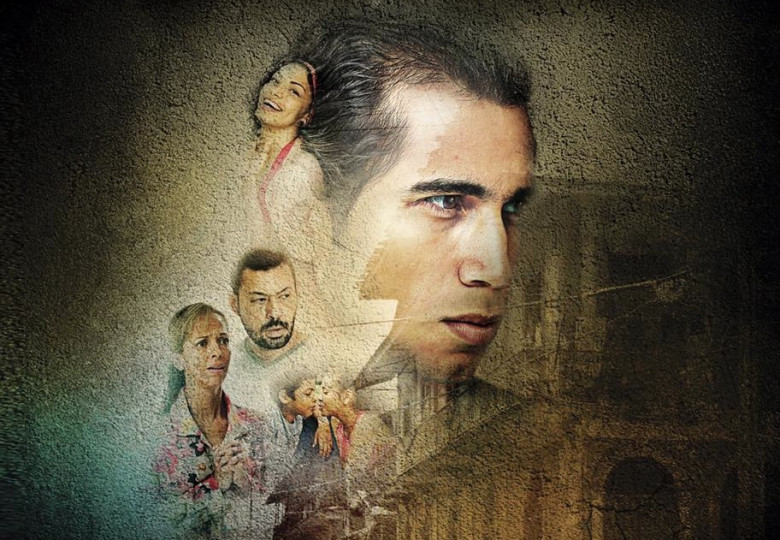HBO
Saturday, October 29 2016
Manchester Arena (formerly M.E.N Arena), Manchester, Lancashire
Tyson Fury vs. Wladimir Klitschko (WBO/WBA heavyweight title)
Hughie Fury vs. TBA (heavyweight)
PPV
Saturday, November 5 2016
TBA Las Vegas
Jessie Vargas vs. Manny Pacquiao (WBO welterweight title)
HBO-PPV
Saturday, November 19 2016
T-Mobile Arena, Las Vegas
Sergey Kovalev vs. Andre Ward (WBA/IBF/WBO light heavyweight title)
Boxing schedule
Teatro Nahual presents: Leyendas y Realidades
Compiled by the El Reportero’s staff
Introducing the Leyendas y realidades in the Bay Area @MCCLA.
Written and directed by Verónica Meza, Leyendas y Realidades depicts popular legends from Latinoamérica such as La llorona and La mulata de Córdoba, each offering a glimpse into Hispanic culture and myth.
With live music and talented local artists, this project will make you laugh and reflect about life. Showing contemporary reality and socio-political realities, the play incorporates La Rumorosa and La madre de Ayotzinapa. “El teatro del pueblo y para el pueblo” promotes education and entertainment through theater to create social consciousness.
Friday, Nov. 4 at 7:30 p.m. @ Theater. Saturday, and Nov. 19 at 7:30 p.m. @ Theater. Tickets $20 and $25.
Cinco y Cinco/Five and Five exhibition series at The Mexican Museum
The final conversation in the Cinco y Cinco/Five and Five exhibition series at The Mexican Museum. This last discussion will be between curator Anthony Torres and renowned contemporary artist Bernardo Roman Palau.
This conversation is part of Cinco y Cinco/Five and Five exhibition that spotlight’s contemporary “Latino Art” as a rich, ambiguous area of inquiry that moves beyond geography or ethnicity.
Join us on Thursday, Oct. 27, from 7 p.m. – 8 p.m. Admission is free and open to the public. The Mexican Museum, located at Fort Mason Center, Building D, in San Francisco.
Lung Force Walk awareness
This is a remembrance of my dear brother Raul Rekow and a fundraiser for lung cancer research. Please donate what you can and join us. to walk in honoring our loved ones who have fallen and in raising awareness. Also, you can register and walk for free and simply add your spirit to ours in this noble effort.
Saturday morning, Nov. 5 at the Presidio, Chrissy Field, 610 Old Mason Street, San Francisco.
Mariachi Flor de Toloache
Latin GRAMMY® nominated Mariachi Flor de Toloache continue to win the hearts of music and mariachi fans alike through their distinct vision and enlightened interpretation of traditional instruments. The band’s diverse ethnicities and musical backgrounds are transcending culture and gender by forging new paths for mariachi music, showcased in an NPR Music Tiny Desk Concert. Like the legendary Toloache flower used in Mexico today as a love potion, the ladies of Flor de Toloache cast a spell over their audiences with soaring vocals and physical elegance.
The New York City-based band and first all-women Mariachi is led by co-directors Mireya I. Ramos (founder) on violin and Shae Fiol (original member) on vihuela, with Julie Acosta on trumpet and Eunice Aparicio on guitarron.
Sunday, Oct. 30 @ 4:30 p.m. SJZ Boom Box Stage at La Ultima Parada San Jose Mexican Heritage Plaza, 1700 Alum Rock Ave., San Jose.
FREE Admission to Concert. Admission $5 to La Ultima Parada, a Celebration of Life on the Day of the Dead
Panamenian Film the finalist of Huelva Film Festival
by the El Reportero’s news services
The Panamanian film Salsipuedes (2016) is today among the 16 finalists in the Latin American Film Festival of Huelva, to be held from November 11 in the Spanish city.
The drama, which also aspires the Goya awards for best Latin American film, and Oscar, in the section of foreign films, chronicles the rise and fall of a Panamanian boxer while portraying the social and economic inequalities in the country in various stages of the capital city.
Among the protagonists stands the late Cuban actress Alina Rodriguez (Dona Raquel), who was a key element in identifying and the acting training of the children in the neighborhood who play a role in the film, directed by Ricardo Aguilar and Manolito Rodríguez.
The film, 100 percent Panamanian, deals with the recovery of the identity, the affection to the family, the neighborhood and the country, in addition to exposing social evils such as corruption, poverty, unemployment and loss of values.
For three months, the filmmakers toured about 40 scenarios in the capital, including El Chorrillo, Barraza, San Felipe, Santa Ana and Plaza Amador.
Ivette Cepeda to Celebrate Cuba’s Cultural Week in Costa Rica
Cuban singer Ivette Cepeda will perform in San Jose and in Puntarenas as part of the celebrations for the Cuban Culture, which starts today in Costa Rica.
The renowned singer arrived Sunday in San Jose accompanied by the musical group Reflexion. She will be responsible for the opening of the week of celebrations with a concert at the University of Costa Rica.
After that, she will sing along with the group Reflexion and the Costa Rican group Son de Tikizia. Then, she will sing at the House of Culture in Puntarenas.
Films from 45 countries to compete in film festival
More than 400 short films and six animated films from 45 countries will compete, starting Tuesday, here, on the 24th edition of the Anima Mundi Festival, confirmed the organizers of the event.
Among the films in competition there are included 180 Brazilian films and will be the Franco-Belgian-Japanese film ‘The Red Tuirtle’, directed by Michael DuDok de Wit and winner of the Special Jury Prize in the exhibition Un Certain Regard at the last Festival in Cannes.
In 23 editions held so far, and according to the organisers, were displayed over eight thousand productions from 80 countries, of which approximately one million 200 thousand people enjoyed.
The festival based in Rio de Janeiro and São Paulo has as main attraction the fact that the winner of this festival, gets as part of the award, the right to dispute the Oscar.
Federal lawsuit to end money bail presser forward
Submitted by Equal Justice Under Law
San Francisco, CA — A class action lawsuit seeking to end the practice of money bail in San Francisco will move forward against the city’s sheriff, a federal judge has ruled.
United States District Court Judge Yvonne González Rogers ruled Friday that the lawsuit, which takes aim at San Francisco’s “wealth-based detention scheme,” may proceed against Sheriff Vicki Hennessy for future structural reforms that could end the city’s money bail system. González Rogers dismissed the lawsuit against the City and County of San Francisco and the state Attorney General. González Rogers denied the California Bail Bonds Association’s request to join the list of defendants.
González Rogers ordered Hennessey to file an answer to the complaint by Nov. 1. Hennessey has never taken an official position on money bail. Her predecessor, Ross Mirkarimi, opposed its use, while California Attorney General Kamala Harris has defended it.
Equal Justice Under Law, a Washington, D.C.-based civil rights organization that fights systemic inequalities in the legal system, filed the lawsuit on Oct. 28, 2015 on behalf of Riana Buffin and Crystal Patterson, who were unable to afford their bail after being arrested in San Francisco last year. Phil Telfeyan, the organization’s Executive Director, called the judge’s ruling “a great victory.”
“It allows our claims against San Francisco’s unjust bail system to move forward, and it requires Sheriff Hennessy to state her official position regarding the unfairness of money bail. We trust that Sheriff Hennessy will recognize the inherent inequality in a system that frees the rich and jails the poor,” Telfeyan said.
The lawsuit alleges that San Francisco’s bail system is unconstitutional because it violates the principle of equal protection under the law. San Francisco’s fixed bail schedule, set by San Francisco Superior Court judges and ranking among the most expensive in the state, sets bail amounts based on offense and does not take individual circumstances or public safety into account, according to the lawsuit. Approximately 50 people per day and 18,000 people per year are booked into San Francisco County Jail. About 85 percent of inmates have not yet been convicted. Because they cannot afford bail, they can remain locked up for months while awaiting trial, often losing their housing, jobs, or children.
The lawsuit argues that appropriate conditions of release — including pretrial release services and text message or phone call reminders of court dates — can save taxpayer dollars while also increasing public safety and court appearance rates. The lawsuit also calls for appropriate alternatives to pretrial incarceration such as electronic monitoring, intervention and rehabilitation programs, stay-away orders, and home detention.
Since the beginning of 2015, Equal Justice Under Law has filed eleven class action challenges to money bail systems in eight states. As a result, cities in Alabama, Kansas, Missouri, Mississippi, and Louisiana have reformed their practices to end the use of secured money bail for new arrestees.
San Francisco Public Defender Jeff Adachi, whose office represented Buffin and Patterson before prosecutors dropped criminal charges against both women, said high bails can motivate innocent people to get plead guilty to crimes simply to be released from jail.
“It makes no sense that wealthy people charged with serious crimes can buy their way out of jail without regard for public safety while poor people charged with minor offenses languish behind bars,” Adachi said.
Telfeyan said Equal Justice Under Law will continue to litigate aggressively to prove to the court that money bail in San Francisco discriminates based on wealth-status, creating two separate systems of justice, one for the rich and another for people who are poor.
“Jailing people simply because they are too poor to afford bail offends basic principles of fairness that are deeply rooted in our society,” he said.
Judge González Rogers’ ruling can be found here:http://equaljusticeunderlaw.org/wp/wp-content/uploads/2016/10/99-2016-10-14-Dismissal-Order.pdf
Masters and slaves: Can the world reject the rules of the game?
Will the 21st Century Invent a New Way of Living?
by Iskander Valitov
Originally appeared at RIA Novosti
The hegemon’s failures and weaknesses are obvious
The US has failed to achieve a majority of its geopolitical objectives. It failed to reduce the Russian economy to tatters; Assad is holding up; no one takes seriously the idea of Russia leaving Syria, nor could the US get Russia to deploy troops in Ukraine, or drive a wedge between Turkey and Russia. Britain ignored the American President’s orders not to vote for Brexit. Several years of negotiations on the Transatlantic Partnership have failed.
Barack Obama was also uncomfortable during the recent G20 summit in China. If one adds to this a gigantic un-payable debt the divide among American elites on US strategy, his standing is unenviable, as other challenges arise. Russia and China draw closer faster. The Collective Security Treaty Organization grows stronger, BRICS is organizing its international institutions.
There are more people ready to rebel, and the US does not always find the strength to punish them.
A change of structure or a change of master?
What exactly is going on? Should the US yield the place of world ruler to someone else? For example, to China-Russia condominium? Is this possible without a major war? Clearly, there is a serious risk for the planet.
Or should we deal with problems at another level? Perhaps a tectonic shift of the world order itself? The ruler would not change, but the centuries-old structure of society would. What kind of process is under way? What are we leaving behind and where are we going? What position should we take with our allies?
Today no one has a clear answer regarding the future world order, but the question is being intensely discussed. In will probably be arrived at empirically, but a lot will depend on how accurately we can conceptualize it.
Fundamental social relations
I believe the world has come to an important historical moment. The fundamental top-dog/underdog equation is being questioned. Until now, capitalism and democracy were accepted, but it is becoming clear that the question of who receives what part of profit is determined not by the “invisible hand of the market”, but rather by the dominant group’s rules of the “free” market.
Top dog/underdog relations originate in an environment with limited resources. They organize society, stop the war of all against all and allow for the reproduction of the social whole. Everyone wins: those who dominate and those who are subordinate.
This social organization allows for robbing less organized and weaker neighbors. Whether the distribution of goods is fair or not is a secondary question. It’s important that the whole survive, ending the chaos.
In that world, wars are inevitable. Everyone competes, wins and loses. Those are the rules.
Under conditions of universal abundance and free access to goods, top dog/ underdog relations could not appear because they would not be functional. There is no reason for subordination if all goods are available and access to them is free.
But top-dog/underdog relations have their own inertia, in which dominance itself becomes a value, shaping institutions, hierarchies and even psychological reality.
In topdog/underdog relations, abundance and free access to goods are anathema. They require access to scarce goods to be available in exchange for subordination and loyalty, i.e. only for “law-abiding” citizens.
People dominate and subordinate voluntarily and knowingly, still too close to wild nature and its hierarchies. Social relations successfully assimilate a person’s biological substrate with its instincts.
These relations are also rooted on a spiritual level. The Heavenly Kingdom is built on subordination and worship. We and the angels submit ourselves to God not only voluntarily, but also with love, as top-dog/underdog relations are reproduced.
Prospects for a top-dog/underdog world
We should not say that a world based on this relationship has no future. It’s quite clear today that it has, regardless of who the hegemon is.
We support the established order because it allows us to survive in a hostile, competitive environment. If someone allows us to hope that we can improve our position within this matrix, we be doubly loyal to it.
Many things change when the game of “king of the hill” ends in victory: There is no one to steal from, no one to resist.
Managers understand this. Top-dog/underdog relations transform into total control, including of thoughts and emotions. The next generation of control technologies is built on the dehumanization of the individual, killing his ability to reflect.
The direction of technological development is also clear. First of all, tracking of private communications, medical and drug dependency will be developed. Research into new physical principles leading to the discovery of new sources of energy will be shut down and outlawed. Ways to maintain your own health, including self-healing, will be made inaccessible.
Possible alternative
Is there an alternative to the top-dog/underdog world? If key players do not try to enslave each other, do not complete, do not fight, then what kind of consciousness would they have and what kind of strategic problems would they solve instead of pursuing dominance?
We need to create abundance instead of deficits to neutralize the fundamental basis for reproducing top-dog/underdog relations.
Once we had a thesis on the need to build the material and technical basis of communism, while social practice at the time was heading in an opposite direction. I think it is still relevant today. To enter the new world we need unlimited basic resources, first of all energy.
We need to move to club-like relations instead of hierarchies. We need venues for negotiation, platforms for joint planning instead of organs of monopolistic leadership and control.
If until now world history was about narrowing evolutionary possibilities, closing entire lines of development, a tendency toward uniformity, standardization, now a reverse process should take place: a widening of evolutionary diversity. The number of members in the world concert should start growing. We should not compete, but build. Cultural/historical creativity should become the main work in progress.
The world has come to a point where we need to decide between two opposing trends. One aims to eliminate autonomy and freedom of movement of individuals, communities and entire countries. The other trend aims to defend evolutionary lines and privacy; it implies the right to individual change as well as to self-preservation.
The first way is the way to decrease vitality, ignoring the movement of life manifesting itself through evolution and creation. The second is to increase vitality and achieve abundance and true independence from each other.
The Council of Foreign Relations
NOTE FROM THE EDITOR
Dear readers: As the Presidential Election goes on in high gear and many of us can see the obvious biases practiced by the mainstream media, I thought this article, written by James Perloff, could bring some light of who the power to be is and really an who really rules the US. THIS IS THE THIRD PART OF A SERIES.
What is, how it formed and who are the Council of Foreign Relations
by James Perloff
Enter Obama
Candidate Barack Obama revealed he would proceed with the Bush initiatives. In a speech in Berlin on July 24, 2008, he stated:
That is why the greatest danger of all is to allow new walls to divide us from one another. The walls between old allies on either side of the Atlantic cannot stand. The walls between the countries with the most and those with the least cannot stand. The walls between races and tribes; natives and immigrants; Christian and Muslim and Jew cannot stand. These now are the walls we must tear down…. Yes, there have been differences between America and Europe. No doubt, there will be differences in the future. But the burdens of global citizenship continue to bind us together…. In this new century, Americans and Europeans alike will be required to do more — not less. Partnership and cooperation among nations is not a choice; it is the one way, the only way, to protect our common security and advance our common humanity.
Obama had only been president for a little over two months when he traveled to Europe for a series of meetings with European leaders. He attended the G20 Summit, which ended with a tentative agreement to launch a new global financial system, using as the rationale for this major step toward global government the recent Fed- and government-spawned financial meltdown.
Henry Kissinger — foreign policy mouthpiece of the establishment for four decades — wrote an article for the January 12, 2009 issue of the International Herald Tribune entitled “The Chance for a New World Order.” He stated:
As the new U.S. administration prepares to take office amid grave financial and international crises, it may seem counterintuitive to argue that the very unsettled nature of the international system generates a unique opportunity for creative diplomacy….
Even the most affluent countries will confront shrinking resources. Each will have to redefine its national priorities. An international order will emerge if a system of compatible priorities comes into being….
The alternative to a new international order is chaos.
Kissinger also stated on CNBC’s “Squawk on the Street”: “The president-elect is coming into office at a moment when there is upheaval in many parts of the world simultaneously…. His task will be to develop an overall strategy for America in this period when, really, a new world order can be created. It’s a great opportunity, it isn’t just a crisis.”
Past statements reveal that the establishment wants a single currency for the world, just as the EU has consolidated its currencies into the “euro.” As far back as the 1944 Bretton Woods Conference, John Maynard Keynes proposed a world currency he dubbed bancor. Richard L. Gardner (CFR) wrote in the Fall 1984 Foreign Affairs: “I suggest a radical alternative scheme for the next century: the creation of common currency for all the industrial democracies and a joint Bank of Issue to determine that Monetary Policy.”
In March of this year, Obama and British Prime Minister Gordon Brown met with reporters at the White House. Brown announced that “there is the possibility in the next few months of a global new deal that will involve all the countries of the world in sorting out and cleaning up the banking system.” Obama added:
Globalization can be an enormous force for good…. But what is also true is … we still have a 1930s regulatory system in place in most countries designed from the last great crisis, that we’ve got to update our institutions, our regulatory frameworks, so that the power of globalization is channeled for the benefit of ordinary men and women.
If trends continue, however, the changes can be expected to benefit a tiny handful of the global elite, not “ordinary men and women.” Further evidence that Obama’s administration will simply continue the globalist agenda is indicated by his appointments.
IT WILL CONTINUE ON NEXT WEEK EDITION
Tamarind fruit: 7 amazing health benefits you shouldn’t ignore
Published by Omigy Health
It’s the fruit used in various recipes in almost all the parts of the world.Like Africa, it is the place where the tamarind originated, but now it grows in many parts of the world, mostly in Asia.
The highest consumption being in India in many recipes of the daily food. It is also a taste to eat with salt and pepper. It gives an awesome taste where you will start licking your finger tips. I remember of my school days, where the tamarind was my most favorite fruit. In the break time, me with my friends used to collect money and buy tamarinds, or sometimes used to throw stones on trees for tamarind. It was a great fun but even the taste of the tamarind was too good and was affordable to do such a mischievous thing.
It has also many health benefits included in it
1.Treating in the inflammation of joints
Aged people often suffer with this problem and are controlled by the help of tamarind. You may find for some extreme good medicines, but there is no better medicine as tamarind due to its properties of anti-inflammatory properties. The interleukin chemical which is responsible for arthritis can be controlled by tamarind by giving a protection shield to the bones and joints.
Immune system developer
Rich In vitamin C
Antioxidant property – keeps the infections away
Controls the free radicals responsible for development of cancer cells
Is known as the immune system booster
Contains another property called anti-microbial. The mixture of anti-microbial and anti-inflammatory is of great influence in ailments and infections.
The virus entering the body due to weather changes can be prevented by consuming tamarinds regularly.
This makes the immune system to build stronger and healthier
Kidney purifier
It is the best detoxifying agent
It is rich in potassium and contains cleansing properties
These properties help to flush the toxic substance away present in the kidney.
Hence it keeps the kidneys safe by its special properties.
2.Eyesight is improved
Tamarind consumption on regular basis is good for your eye health and makes your vision better.
Tamarind is rich in vitamin A
Beat-carotene required for better eyesight is found in tamarind.
It helps In reducing the risk of macular degeneration
Tamarind is helpful in curing dry eyes.
The best treatment for hair loss
The tamarind pulp liquid is applied to the scalp to enable the cells and help in growth of hair
The tamarind pulp liquid is obtained by placing it in water and then squeezing the pulp to form a paste
This paste mixed with liquid is applied all over the scalp and allowed to remain for about an hour
Later it can be washed away with Luke warm water.
4.Diabetes
Are you a diabetic patient? And looking for natural remedy in tamarind? yes! There is a natural remedy in tamarind due to its special properties. You can find yourself below;
It is the best natural medicine for diabetes
The tamarind paste can be utilized available in the market if there is no availability of tamarinds around you
This tamarind paste is mixed with the different type of herbs and jamun to keep your diabetes in control.
This above given solution will be a best medicine for your diabetes. After taking for a good period of time, you can notice the changes.
5.Good for heart
Tamarind is high in potassium level. Hence it is helpful in reducing blood pressure level.
Cholesterol level in the body is controlled by tamarind due to the presence of fiber in it.
As said above, the free radicals are in check which causes cancer cells and also are harmful to heart.
Cholesterol is the main reason for heart related problems and this is reduced- resulting in a good heart
These all properties of tamarind help your heart to stay healthy and in a good functional state.
It is also used an ayurvedic medicine in all types of heart related problems.
Many people are concerned about their health and have a mental feeling that only by spending more money they will have a better health! But this is complete false statement. Your health is in your hands- said by many people including our ancestors. This means that we are surrounded by the solution but we don’t find it instead wasting the money on unnecessary hospital bills. Have a watch in your kitchen, you’ll find all the medicines there!
In ‘uncharted’ period of violence, police change tactics but keep perspective
by Josh Siegel
As police around the country grapple with recent violence against their own, Chief Brandon del Pozo of the Burlington Police Department in Vermont is requiring his officers to pair up when responding to calls for service, as a method for added safety and support.
“It’s important for cops to have someone to talk to about what’s going on instead of stewing in a car alone for hours,” del Pozo told The Daily Signal in an interview. “Tense and uncertain environments stop cops from slowing things down, problem solving, and listening to citizens. Just having a partner on hand to process what’s going on will help us return to normalcy.”
Other police departments that are implementing two-person patrols include San Diego, Los Angeles, Oakland, Boston, Minneapolis, Philadelphia, and Washington, D.C.
Meanwhile, another big city agency, the City of Orlando Police Department, is looking into purchasing bullet-proof vests designed to repel sniper fire in a way that normal protective gear can’t.
“It’s just hard for us, especially the past few years, where we’ve seen more ambush style shootings,” Orlando’s police chief, John Mina, told The Daily Signal in an interview. “Here in Orlando, we have a pretty rich history of engaging with the community and we aren’t afraid of doing that. Though morale is good, we are telling officers to be super vigilant, everywhere.”
In interviews with The Daily Signal, law enforcement leaders across the country caution that the fatal shootings of police officers mounting this year are forcing at least a short-term change in law enforcement tactics, and causing anguish among families of police who worry about the people they care for risking their lives on the frontlines.
Yet at the same time, police departments are responding to recent ambush attacks in Dallas and Baton Rouge and that left eight officers dead by mostly taking the long view, emphasizing the importance of shoring up community ties as a way to diffuse historic tension around law enforcement.
“Community policing has to continue because it’s the right way to police our communities,” said del Pozo, who polices a predominantly white city experiencing the opioid crisis and violence associated with it. “But my officers have to feel safe before they can connect with citizens. They know that in Vermont we feel a little lucky to have it better than Missouri, or Louisiana, or Minnesota, but we know sometimes there is no logic behind where violence can strike.”
‘Easy targets’
While larger police departments have the manpower to take extra precautions, and can still maintain quick response times across the areas they cover, other smaller agencies are not changing their tactics because they can’t afford to.
Mark Wasylyshyn, the third-term Republican sheriff of Wood County, Ohio, has not been able to double up patrols in the sprawling rural area policed by his 125 deputies.
He recognizes how police officers are particularly vulnerable to ambush-style shootings, even though the mostly white county he represents is far removed from the tension that exists in more urban cities.
“If someone wants to kill us, we unfortunately are easy targets,” Wasylyshyn told The Daily Signal in an interview. “If someone really wants to kill a cop, they can call 911 and tell us where to be. But while we always have to be vigilant, we are very engaged with our community and I truly believe most people are really good and appreciate their local law enforcement. There are a very small amount of people who want to do us harm.”
Even though Wasylyshyn doesn’t have the flexibility to institutionalize two-person patrols formally, he says deputies always have the option to radio in a request for a second deputy to assist a scene.
The sheriff’s department is also taking other actions to handle mass protest situations, even though there have been few in Wood County.
A mobile field force made up of representatives of area law enforcement agencies, including the police representing the nearby Bowling Green State University, convened for the first time on Monday with the mission of training officers how to maintain peace in situations of civil unrest without imposing on freedoms.
“I truly believe most people are really good and appreciate their local law enforcement,” says @woodctysheriff.
“A lot of problems arise with law enforcement not knowing how to respond to an incident of unrest,” said Eric Reynolds, the chief deputy of Wood County Sheriff’s Office. “When we have officers make mistakes, we discipline them and take care of business. As long as you do that, and focus on training officers the right way, the community appreciates it and doesn’t judge all law enforcement by that one misdeed.”
‘Public and police together’
Capt. Marc Yamada of the Montgomery County Police Department in Maryland is tasked with reiterating the community-first approach that has come to define modern policing.
It’s a counterintuitive idea, to engage after you’ve been wronged, rather than withdraw — to walk through neighborhoods as a matter of routine, instead of just in response to an emergency.
But this is the way Yamada is telling his fellow officers to respond — including his son, Ryan, a recent college graduate and once-aspiring accountant who chose the most contentious of times to instead join Montgomery County’s police academy.
“While yes, the current events are extremely negative in nature, it just strengthens our belief in community policing,” said Yamada, director of community outreach for the police, a recently created position in the department.
“It’s the public and the police together,” Yamada told The Daily Signal in an interview. “If they trust us and see and know you, they are our first line of defense. The community sees and hears things before we do, and promoting an environment that makes them comfortable enough to just call us leads to prevention and detection of criminal activity.”
‘It’s a Philosophy’
Margaret Mims, the 10-year sheriff of Fresno County in California, says her agency has earned the respect of the community.
In the past five and a half years, she says, the sheriff’s office has had 11 officer-involved shootings out of 1,220,000 calls for service.
The agency trains its 430 deputies on developing verbal de-escalation techniques before resorting to force.
In addition, she says, the sheriff’s office meets regularly with representatives of Fresno County’s minority communities, especially its large Hispanic population.
Due to the length of this article and lack of space we unable to publish the whole article. To read the complete story visit: To read the complete story visit:
http://dailysignal.com/2016/07/22/in-uncharted-period-of-violence-police-change-tactics-but-keep-perspective/)
Rothschild doubles down on gold as banking collapse begins
Germans told to stockpile food/water
by Jay Syrmopoulos
The Free Thought Project
Berlin, Germany – The most prominent bank in Germany is at risk of imminent collapse, with potentially profound effects for the EU, the United States and the rest of the world. The prospect of a cataclysmic global banking collapse of this nature has not been seen since the implosion of Lehman Brothers in 2008, and subsequent fallout in the global banking world.
But these events haven’t taken place in a vacuum, as earlier this year savvy international investor Lord Jacob Rothschild, during a semi-annual address to RIT Capital Partners, announced that they are reducing stock market and currency exposure and increasing their gold holdings, warning that the world is now in “uncharted waters” and the consequences are “impossible” to predict.
Rothschild stated:
“The six months under review have seen central bankers continuing what is surely the greatest experiment in monetary policy in the history of the world.
We are therefore in uncharted waters and it is impossible to predict the unintended consequences of very low interest rates, with some 30 percent of global government debt at negative yields, combined with quantitative easing on a massive scale.”
The collapse of Deutsche Bank would most likely begin a cascade of Western banking institutions falling like dominos (which could include Barclays in London and CitiGroup in the U.S.). According to the same expert who valued Lehman’s worth at it’s collapse, Deutsche Bank’s current value of $1 trillion dollars is significantly more than Lehman Brothers’ valuation during their collapse in 2008.
The contagion from a collapse of this magnitude could potentially trigger a systemic banking collapse the likes of which the world has never seen. The EU would almost certainly disintegrate upon a collapse of this magnitude, as Deutsche Bank is the largest bank in Germany — which is essentially the financial heart and soul of the EU.
When Jacob Rothschild says that he is buying gold because the central banks are out of control, you begin to understand the scope and magnitude of what is transpiring, as his family has been in de facto control of the world’s central banks for centuries.
Deutsche Bank shares have fallen sharply on the news that German Chancellor Angela Merkel won’t bail out the struggling bank, with shares falling by as much as six percent in early week trading, turning in their worst performance since 1992. Since just January, the bank’s shares have lost over 52 percent of their value.
Merkel has also refused to provide state financial assistance to Deutsche Bank in its legal battle with the U.S. Department of Justice. The chancellor made her position clear during talks with Deutsche CEO John Cryan, according to Focus magazine. The German-based lender may be fined up to $14 billion over its mortgage-backed securities business before the 2008 global crisis.
The German Chancellor also noted that Deutsche Bank will not be getting a bailout from the European Central Bank – the lender of last resort for European banks.
Revealing the truly dangerous threat the German megabank poses to the international banking system, a report from the International Monetary Fund in June implied that Deutsche Bank was a systemic risk to the global financial system.
Of all the world’s big banks, the I.M.F. said,“Deutsche Bank appears to be the most important net contributor to systemic risks.”
Many fear that in the wake of Merkel’s refusal to bail out Deutsche Bank, Germany may now be considering a bail-in instead?
According to Investopedia:
A bail-in is rescuing a financial institution on the brink of failure by making its creditors and depositors take a loss on their holdings. A bail-in is the opposite of a bail-out, which involves the rescue of a financial institution by external parties, typically governments using taxpayers money. Typically, bail-outs have been far more common than bail-ins, but in recent years after massive bail-outs some governments now require the investors and depositors in the bank to take a loss before taxpayers.
Essentially, this entails the bank stealing deposited funds, with virtually no recourse for those individuals who have their savings stolen.
It’s not at all beyond the realm of possibility, as it has happened before in very recent history. To keep the bank solvent, the Bank of Cyprus took almost 40 percent of depositor’s funds – leaving customers with essentially nothing they could do about having their money stolen. Assets were frozen and ATM machines were not refilled.
Perhaps this explains why in mid-August Germans were told by their government to stockpile 10 days worth of water, and five days worth of food in case of a “national emergency” hitting the country, with the Czech Republic following suit and making a similar announcement within days of the German warning.
Deutsche Bank’s unbelievably risky portfolio and its exposure to the derivative markets, which stands at over $40 trillion dollars, would undoubtedly cause exponentially more damage than the Lehman Brothers collapse did back in 2008, which precipitated the Great Recession of 2008.
This risk of failure has now gotten so threatening that a number of funds that clear derivatives trades with Deutsche Bank AG have withdrawn excess cash and positions held at the lender, according to Bloomberg.
While the vast majority of the bank’s more than 200 derivatives-clearing clients have made no changes, the hedge funds run on cash highlights serious concern. The paranoia of an imminent collapse spread to the US on Thursday, as 10 hedge funds that are Deutsche Bank clients have decided to withdraw cash and listed derivatives positions from the bank, according to a Bloomberg News report.
Millennium Partners, Capula Investment Management and Rokos Capital Management are among about 10 hedge funds that have cut their exposure, said a person familiar with the situation who declined to be identified talking about confidential client matters.
The hedge funds use Deutsche Bank to clear their listed derivatives transactions because they are not members of clearinghouses. Millennium, Capula and Rokos declined to comment when contacted by phone or e-mail.
Highlighting the contagion banking effect, news that some hedge funds were pulling positions and excess collateral from Deutsche Bank caused shares of U.S. banks to quickly reverse early gains, according to Bloomberg.
Just as Lehman Brothers disingenuously claimed they were financially solvent as the upcoming financial storm brewed in 2008, only to file for bankruptcy, Deutsche Bank has attempted to allay investor concerns by claiming that their financial fundamentals are sound. One would be wise to be very suspicious of any statements made by a failing banking institution.
When the government warnings start, you can be assured that it’s already too late, as the availability of supplies in the case of emergency would be severely constrained after a warning due to the large number of people attempting to procure an extremely limited amount of supplies.
Will Germany become the powder keg that implodes the global economy? Only time will tell, but all signs point to a very similar situation to 2008 — but without central banks having much recourse, as negative interest rates and quantitative easing were some of the last arrows in the quiver being used to prop up the global economy.
What is certain is that an ounce of prevention, ahead of any potential collapse, is the most viable solution for those looking to safeguard themselves and their families. The key is to stock up on food, water and other necessities in advance of the actual crisis fully manifesting. A minimal amount of effort put into preparing early for the side effects of a major economic disaster could be the difference between surviving the crisis, or not, for your family.
Please share this extremely important information to help others be prepared for this potentially dangerous crisis, the severity of which is largely being covered up by mainstream media!
Mexican authorities to investigate missing Honduran immigrants
by the El Reportero’s wire services
A tunnel used for transferring drugs from Mexico to the United States has been found near the International Airport of Tijuana, Baja California, the Ministry of State Security confirmed today.
The drug tunnel, located near La Hielera del Aeropuerto company, was found early yesterday.
According to local media, the ice factory was surrounded by preventive state police agents and soldiers, as several packages of drugs were detected inside.
Tijuana is the most populous town in the Mexican state of Baja California, bordering San Diego County (California, United States) to the north and is considered the westernmost city in Latin America.
In Jalisco, army soldiers found a drug lab in El Rodeo delegation, in the Ixtlahuacan de Los Membrillos municipality.
Mexico: López Obrador proposes free zone instead of wall
The leader of the National Regeneration Movement (Morena, in Spanish) and former Mexican presidential candidate, Manuel Lopez Obrador, has proposed creating a free zone on the border with the United States, it emerged today.
Obrador made the proposal in response to Donald Trump, the Republican candidate for the White House, who has promised to isolate Mexico with a border wall.
According to Obrador, the development of the border zone with the United States is fundamental to stopping migration and combatting illegal activities.
He announced a ‘comprehensive plan’ for the border, which includes tax cuts as well as standardized and competitive fuel and electricity prices, among other measures.
‘The vision would be to convince and persuade the authorities of the neighboring nation that for the sake of both countries is more effective and humane to implement a development policy rather than insisting on giving priority to police and military affairs,’ he said during a visit to the USA.
‘The migratory flow will not be stopped by building walls, carrying out raids and deporting or militarizing the border’, said the potential presidential candidate for the elections in 2018.
Costa Rica receives donation of 2 aircrafts from China
President of Costa Rica, Luis Guillermo Solis, received today two aircraft donated by China to be used in the fight against organized crime, drug trafficking, humanitarian and emergency actions.
The planes, type Y12E of two engines, can accommodate up to 17 people and can also carry cargo and carry out patrols and maritime surveillance, as explained in the ceremony to receive the devices, attended by the Ministers of Foreign Affairs Manuel Gonzalez and of Public Security Gustavo Mata.
The president pointed out his government’s decision to strengthen the fight against organized crime and to ensure humanitarian and emergency response actions in this Central American country.
Crews and mechanics to operate the aircraft have received a six-week training in China, who will shortly prepare other members of Air Surveillance.
Panama: 350 gang members arrested in 2016
A report of the Panamanian Prosecution Ministry revealed that more than 350 persons were arrested linked to different gangs, as a result of 15 police operations this year.
According to the prosecutor specialized in organized crime, Nathaniel Murgas, offenses like sale and distribution of drugs, robbery, extortion and kidnappings are included.
Murgas said many of the gang members are hired by organized crime groups or leaders.
He said the actions carried out by the gangs, increased in the provinces of Colon and Chiriqui, but it was gradually being reduced after the operations started.
By applying a resocializing program called BARRIOS SEGUROS (Safe Neighborhhods) Murgas stated that most of the gang members reach a condition and eventually return to society, others get registered, receive economic benefits (200 dollars a month) but they eventually return to crriminal activities.










